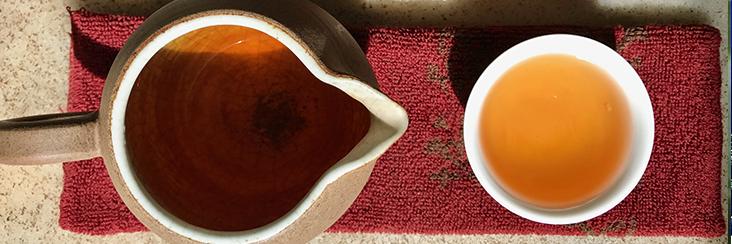
Honey Fragrance Oolong Tasting Notes | Eco-Cha Tea Club

The tea leaves shown above are from a rare batch of winter tea that was affected by the Green Leafhopper. This is the insect that is responsible for the existence of the renowned Oriental Beauty Tea, and the more recent innovation of Concubine Oolong Tea. The presence of this insect indicates that pesticides were not administered during the growing season to deter it. And the effect it has on the bug-bitten leaves is a distinct honey like character prominently in the aroma, but also in the flavor.

This batch of tea was procured from one of our most respected tea artisans. Although he is only in his late 50's, he has been honing his craft for well over 30 years, and he and his son are a highly competent team in their efforts to preserve their local tradition in the heart of Dong Ding Oolong Tea Country. This is why a batch of bug bitten tea is not intimidating or troublesome for him, the way it would be for modern tea producers — he simply knows what to do with it.

The leaves were allowed to oxidize to perhaps 50% or so — significantly more than a Dong Ding or Concubine, but still less than an Oriental Beauty. They were then roasted only once to lock in the flavor profile that was achieved by the processing methods that were employed with attention and skill.

The final result is a hearty character of balanced sweet and bitter qualities under an amazingly fruity, honey-essence, complex and heady flavor and aroma profile. In the end, it is not only the growing conditions and processing methods that make this tea unique — it's how it tastes! And we feel that it is quite a special batch to share with our Tea Club members for this holiday season, and the start of a new year's cycle of the Eco-Cha Tea Club!

Please share your experience of this batch of tea with us and all our Tea Club members so that we can deepen our understanding of these cultural gems of unique batches of tea from one of the world's richest tea resources - the wonderful island of Taiwan!

